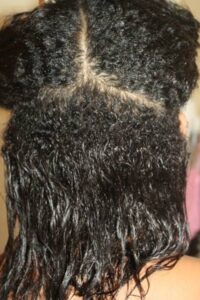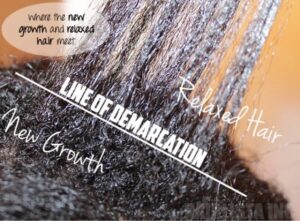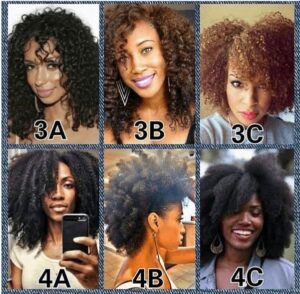NATURALHAIR
Going Natural - What to Expect in the Transition
If you're a woman with chemically treated hair and you've decided to transition to your natural texture, you're in for an exciting journey! Going natural is a liberating experience that allows you to embrace your authentic beauty, but it can also be challenging, especially during the transition phase. In this comprehensive blog post, we'll explore what you can expect when you embark on the journey to your natural tresses, and provide you with tips and insights to help you navigate the process successfully.
The Big Chop or the Transition? One of the first decisions you'll need to make is whether you want to do the "big chop" and cut off all your relaxed or chemically treated hair at once, or if you prefer to gradually transition by letting your natural hair grow out. Both options have their pros and cons, and the choice is a personal one.
The Big Chop:
Pros:
– Immediate transition to natural hair
– No need to manage two different textures
– Fresh start for your hair
Cons:
– Dramatic change in appearance
– Potential for temporary short length
– Adjustment period for styling and care
The Gradual Transition:
Pros:
– Gradual change in appearance
– Ability to maintain length during the process
– More time to learn about natural hair care
Cons:
– Longer transition period (can take years)
– Managing two different textures
– Potential for increased breakage at the line of demarcation


Patience is Key
Transitioning to natural hair takes time, and patience is crucial. Your natural hair growth rate is approximately half an inch per month, which means it can take several months or even years to fully transition, depending on your desired length. During this time, you’ll have to manage two different textures – your chemically treated hair and your natural new growth.

Styling Challenges
As your natural hair grows out, you’ll need to adjust your styling techniques to accommodate the different textures. This can be a learning curve, and you may experience some frustration as you experiment with new products and styling methods. Protective styles, such as braid-outs, twist-outs, and bantu knots, can be your best friends during this phase.

Moisture is Everything
Natural hair tends to be drier than chemically treated hair, so you’ll need to up your moisturizing game. Invest in high-quality moisturizing products, such as leave-in conditioners, hair creams, and oils. Deep conditioning treatments should become a regular part of your hair care routine.

Shedding and Breakage
During the transition, you may experience increased shedding and breakage, especially at the line of demarcation where your natural hair meets your chemically treated hair. This is normal and can be minimized by gentle handling, regular trimming, and proper moisturization.

Embracing Your Texture
As your natural hair grows out, you’ll gradually discover your unique texture and curl pattern. This can be an exciting and empowering experience, but it may also require some adjustment in your self-perception and hair care routine. Embrace your natural beauty and learn to love your texture.

Detangling and Maintaining Length
Detangling natural hair can be a challenge, especially if you’re transitioning from chemically treated hair. Invest in a good detangling brush or wide-tooth comb, and consider detangling in sections while your hair is damp or coated with a leave-in conditioner or detangler. Regular trimming is also essential to maintain healthy ends and prevent excessive splitting and breakage.

Protecting Your Ends
Your ends are the oldest and most fragile part of your hair, and they require extra care and protection during the transition. Avoid excessive manipulation, and consider protective styling techniques like buns, braids, or twists to tuck away your ends and minimize friction and breakage.

Embracing Your Natural Beauty
Going natural is not just about your hair; it’s also about embracing your natural beauty and developing a positive self-image. This can be a transformative journey that involves unlearning societal standards of beauty and redefining what it means to be beautiful on your own terms.
Support System and Resources
Transitioning to natural hair can be both exciting and challenging, so it’s essential to have a support system in place. Connect with other naturalistas, join online communities or local meetup groups, and seek out resources like blogs, YouTube channels, and books to help you navigate the process successfully.
Going natural is a journey of self-discovery, patience, and self-love. While the transition phase can be challenging, the end result – healthy, beautiful, and natural tresses – is well worth the effort. Surround yourself with support, educate yourself on natural hair care, and celebrate every milestone along the way. Embrace your natural beauty, and enjoy the journey.




